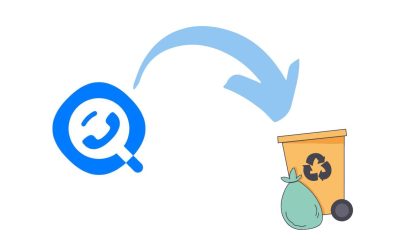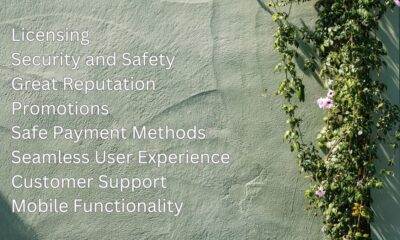

What is Getcontact? Getcontact is a popular app that allows users to identify unknown numbers. The app, which has been downloaded over 50 million times, collects...
When talking of supply chains, the average person imagines a line of delivery vehicles, route planning, etc. However, modern enterprises are largely digital and this changes...
When your website is slower than usual, Google Analytics shows a sudden spike in traffic, or your site keeps crashing, your first thought may be: “Am...


As a team that consists of regular gamblers, we know that the best online casino can be tedious. Our specialists understand that the process may seem...
My biggest fear as an employer with remote employees is Data Security. Ensuring the security of sensitive information when employees work remotely is essential for any...
So far, only Italy has started the process of restricting AI technologies, but it remains to be seen whether other countries will follow. If you want...
The increasing popularity of the cryptocurrency market can be seen everywhere in the world. You will find more and more people entering the cryptocurrency market every...
Do you want to know more about how to make your laptop entirely secure? Get and apply these tested tips to boost the safety of your...
Welcome to the online security revolution! We’re here to explore a new authentication architecture – one that does away with passwords and replaces them with the...
Enterprises face cybersecurity threats from varied sources these days. While threats emerge from seemingly everywhere, the methods attackers use to penetrate your systems remain the same....
The COVID-19 pandemic has launched a revolution in the digital world. Workforces have shifted to online platforms, which has led to a significant rise in cyberattacks...


Identity Management (IAM) is a fundamental security component for businesses that want to secure their data and applications. IAM manages who has access to what, and...
School shootings are a tragic reality in America. It is estimated that since Columbine, there have been over 200 school shootings. These statistics are alarming and...


Security Operation Center (SOC), a central function within an organisation, uses people, processes and technology to monitor and improve security posture of an organization while responding...


A virtual private network (VPN) encrypts data as it travels across the internet, making it difficult for others to access it. A virtual private network (VPN)...


Increasingly, we see an organizational move away from the use of passwords, at least in the traditional sense. Companies are working to meet the changing demands...
Companies are gathering more data about their consumers than ever before. With this in mind, companies are looking for ways to keep their customers’ information safe....


In the early days of Bitcoin, it was very easy to manage your wallet account. In fact, you didn’t even need a wallet account. You simply...
Recent Comments